








The magazine of the photo-essay

Aug 2016 back issue
by AJ Heath


“A free, really high quality photo-essay magazine. Fabulous!”
Stephen Fry. British actor, writer and film & documentary maker

In the last decade the Kingdom of Bhutan has undergone a rapid transition, from a closed Buddhist Kingdom to a
constitutional democracy and is now admired worldwide for its uncompromising pursuit of Gross National Happiness.
But as Bhutan development accelerates, its government and people are engaged in a battle to preserve its culture and
keep its unique identity alive.
Traditional ways of living and cultural practices, particularly those in rural communities, are quickly disappearing in the
quest for new lifestyles and less laborious job opportunities. In a bid to fight globalisation the government passed a
heritage sites bill, which they hope will protect the cultural traditions of isolated communities like the Brokpa Tribe in the
far eastern corner of the country.
Wedged between glacial valleys of the Greater Himalayas, the Brokpa villages of Merak and Sakten are remote in the
extreme. Cut off for centuries, the only way to visit the villages is to complete a grueling multi-day trek, along river
valleys and over a 4,300m pass, but this is all about to change. Within the next few months the first road to the villages
will be completed and the pressure to modernise will become exacerbated.
The Brokpa are ethically distinct from other Bhutanese, having migrated through the Himalayas from the Tshoona
region of Tibet a few centuries ago. Traditions and culture passed down over the ages still play a predominant part of
their social life. They mostly depend on yaks and sheep for their livelihood and do not typically grow crops due to the
high altitude zones they inhabit. They speak a unique dialect and worship their own deities. They wear a singular style
of dress, made famous by their distinctive yak felt hat, known as ‘tsipee cham’, with long twisted tufts, said to prevent
the rain from running into their faces.
As you walk around the narrow lanes of Merak, it is quickly apparent that apart from the introduction of electricity in
2012 and community shared taps of running water, little has changed in centuries. Rails of yak meat dry in the sun,
women sit on their porch weaving traditional blankets on back strap looms and around each corner you’re likely to
encounter a caravan of yak lugging goods up to the village. During the summer months the Brokpa yak herders live a
semi nomadic life, as they search for fresh pastureland for their herds high up in the Himalayas. The village can be eerily
quiet on most days.
Having been semi nomadic for centuries the barter system still exists and wealth is assessed on the heads of livestock.
During the cold winter months they travel down to lower altitude regions, bartering their goods - Cheese, butter, and
dried meat from their yak, for other items such as rice, salt, oil and chilies.
Women command a high degree of respect from their husbands and often function as the head of the family. Polyandry
is still practiced, in fact it is a common norm for a women to marry all the brothers in a family. This prevent their
ancestral land being partitioned over time and by using this system a family can pool it’s resources – one husband can
be away on a trading mission, whilst the other is able to tend the yak at home.
Change for the Brokpa tribe is unavoidable and their reliance on their yak is bound to diminish over time. Goods to the
village will soon be transported by road rather than for days on the backs of their yak but will the road and the increased
number of tourists it is bound to bring in, escalate their desire to modernize or could it pressurize them into preserving
their unique way of life?
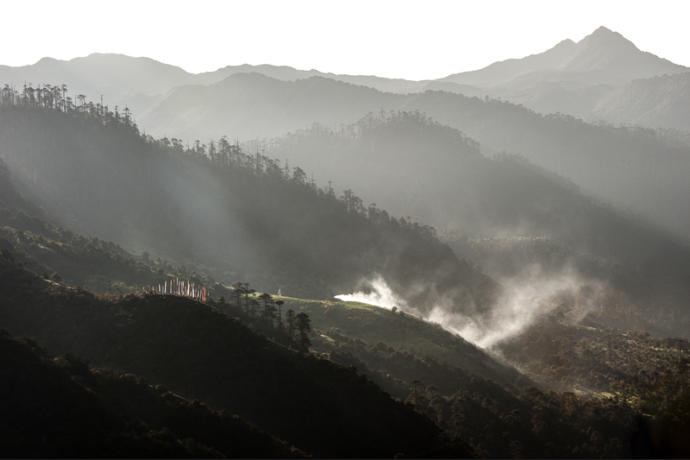
Smoke from a Brokpa yak herder's fire drifts into the early morning air. It is a 4-5 hour hike to the nearest road and the
Brokpa rely heavily on their yak.
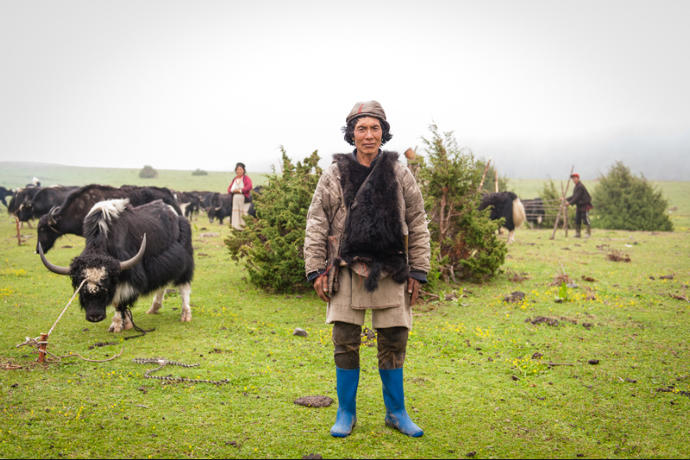
A herder wearing a jerkin made of yak hide for extra warmth.
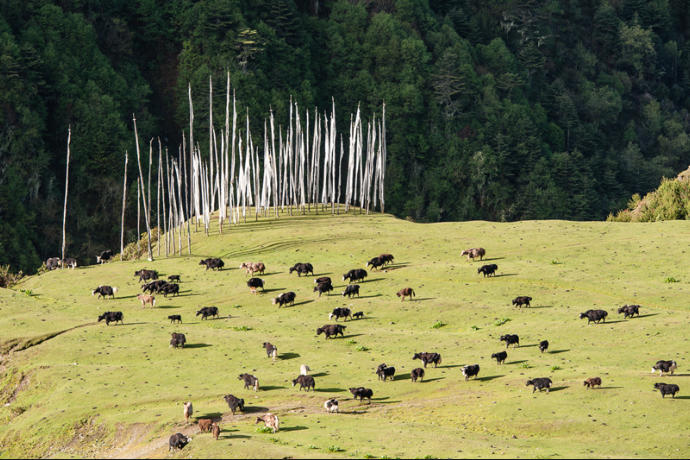
During the summer months the Brokpa Yak herders live a semi-nomadic life, as they search for fresh pasture land for
their yak.
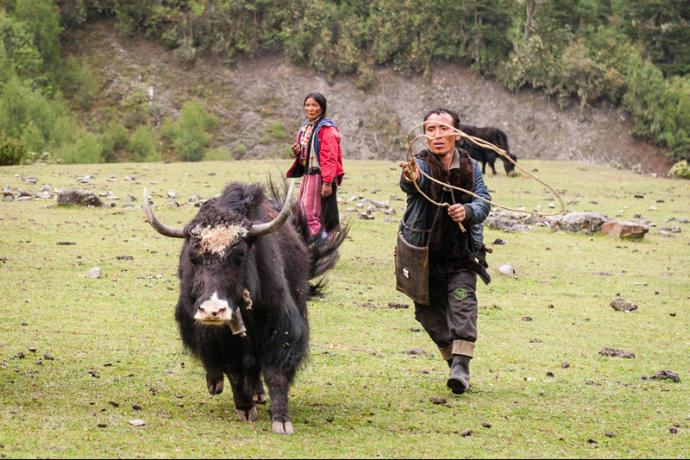
Yak are tethered at night near the campsite to protect them from attack by predators and to have the cows ready for
milking in the morning.
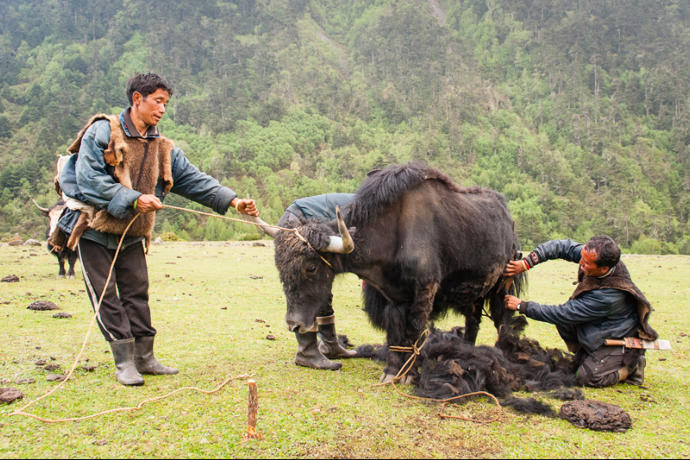
Harvesting of yak hair takes place in May and June. Only castrates and females are sheared while the breeding bull
retains its coat to look more dominant in front of other bulls.
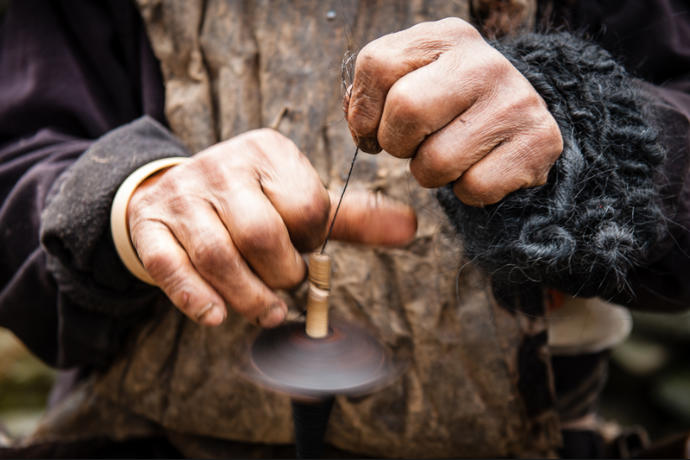
The Brokpa still spin yak hair, using a drop spindle called a yoekpa, however, the use of traditional hand woven yak
wool tents is declining rapidly, as plastic tarpaulins become more readily available.
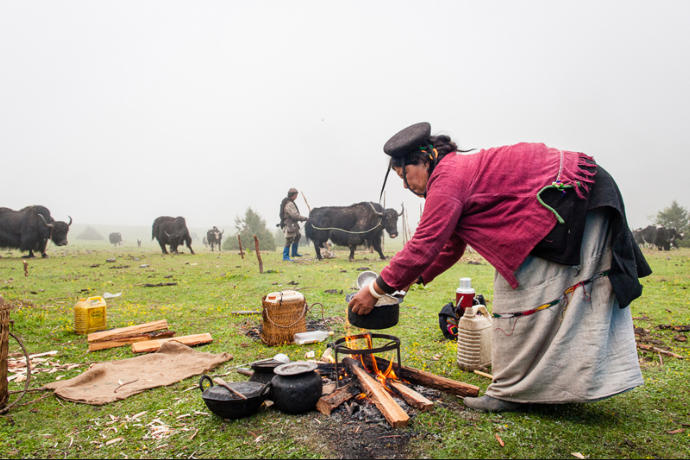
A very hospitable people, drinking butter tea is a regular part of life and is always served to guests. Since yak butter is
the main ingredient, it provides plenty of calories and the herders are often said to drink more than thirty cups a day.
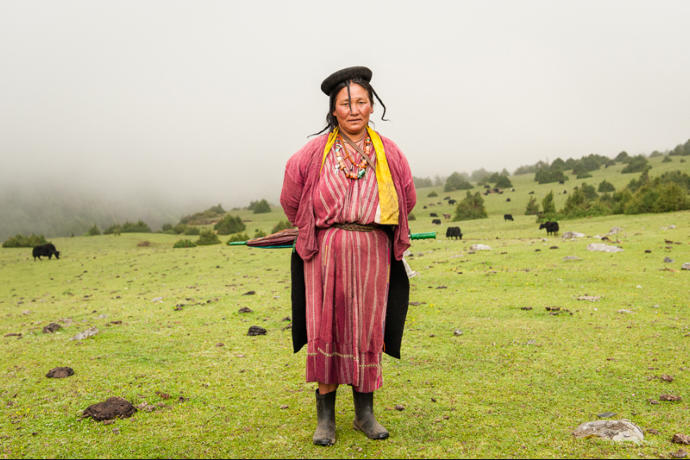
A Brokpa women in traditional clothes made from Yak hair and sheep's wool. Their distinctive hat known as 'tsipee
cham' is made of yak felt with long twisted tufts, said to prevent the rain from running into their faces.
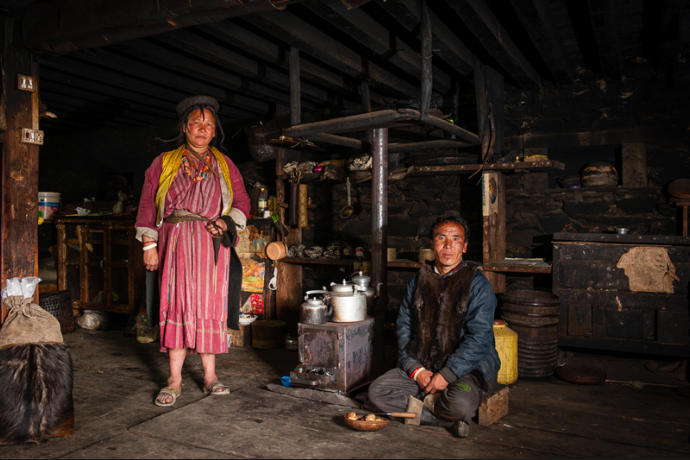
Polyandry is often practiced in these communities. A woman can be married to more than one man at the same time.
Sometimes the co-husbands are brothers to prevent their ancestral land being partitioned overtime. By using this
system a family can pool its resources - one husband can be away on a trading mission whilst the other is able to help
tend to the yaks at home.
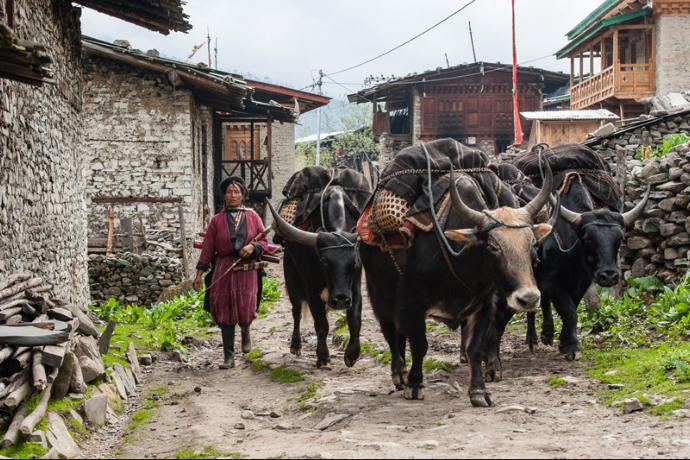


The Brokpa way of life hasn't changed in centres, but with the introduction of the first road, will they continue to rely on
their yak as much as they have in the past?
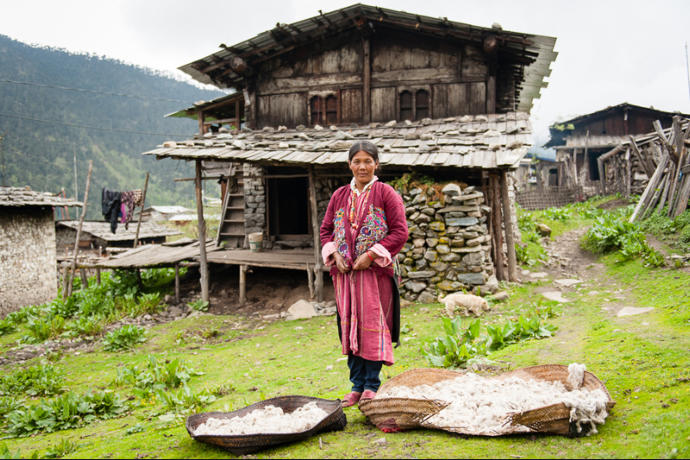
Tshewang Choden (45 yrs) drys sheep's wool outside her home in Merak.
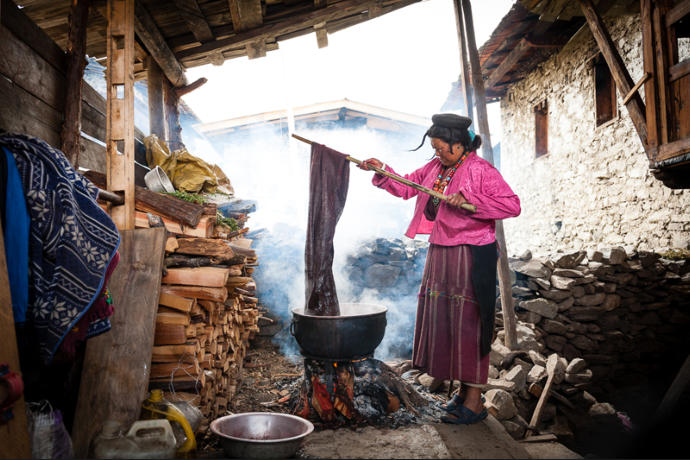
Dawa spends hours dying the wool red, so that it can be tailored into the traditional red jackets that the men wear
during the winter months and at festivals.
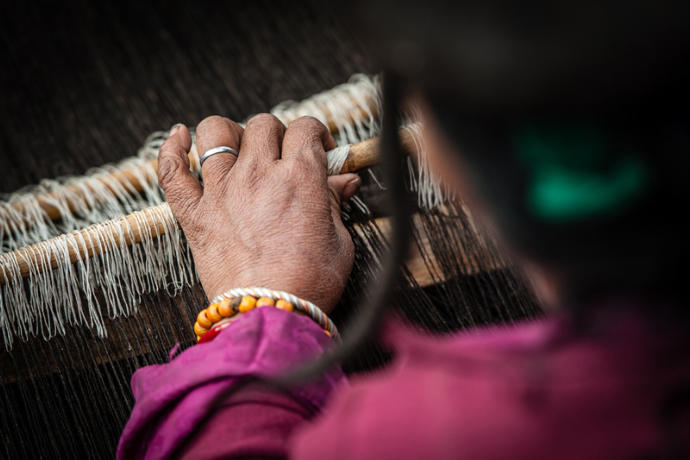
Sonam carefully weaves the yak yarn into a blanket for the winter months.
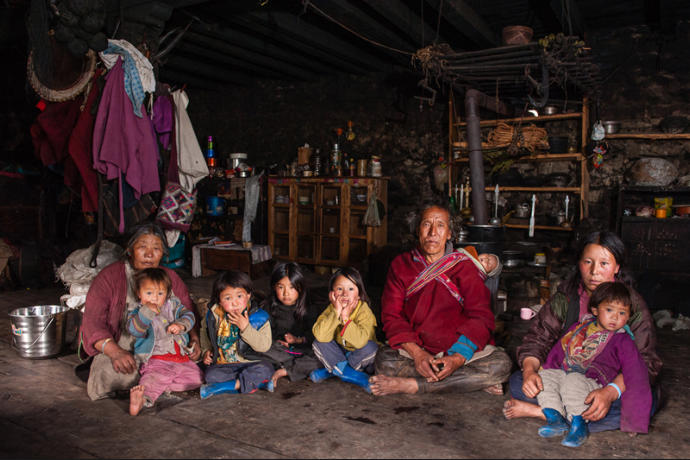
Low living standards, lack of alternative job opportunities, and unhappiness is contributing to increased urban migration.
This is particularly seen in the younger generations and results in the loss of the communities’ vitality and values.
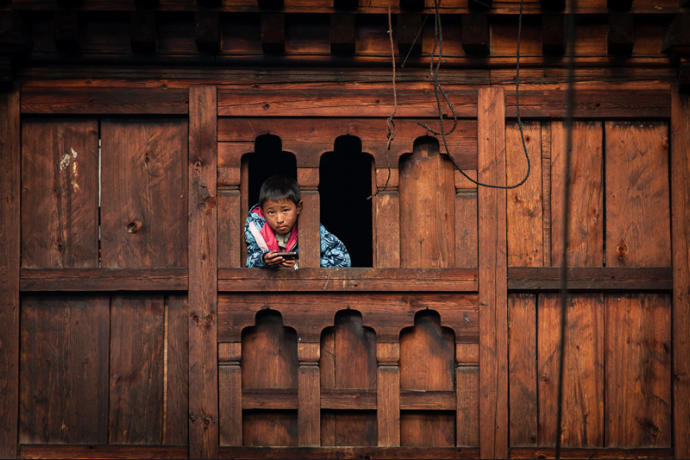
With prayer flags now competing for position with mobile phone masts, many are surprised to find that Bhutan is no
longer the last Shangri-La they were promised.
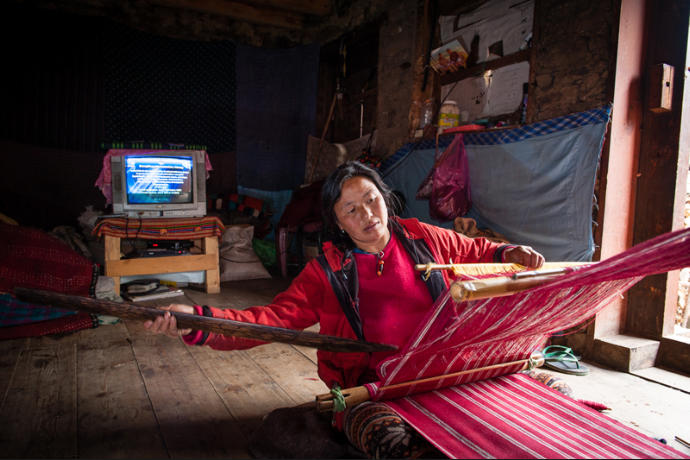
For a long time, Bhutan was the only nation in the world to ban television. TV and internet were only introduced into
Bhutan in 1999, but there are still some isolated communities that do not have access.
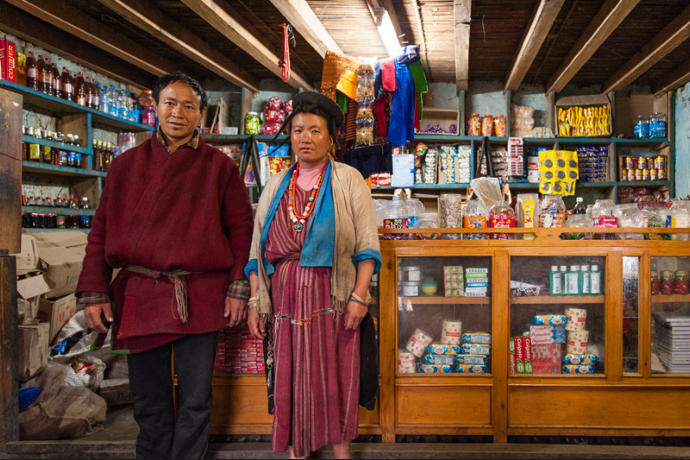
Within the last few years shops have started to appear, bringing with it the added issue on non bio-degradable
packaging. Rubbish disposal is now a growing problem for the village.
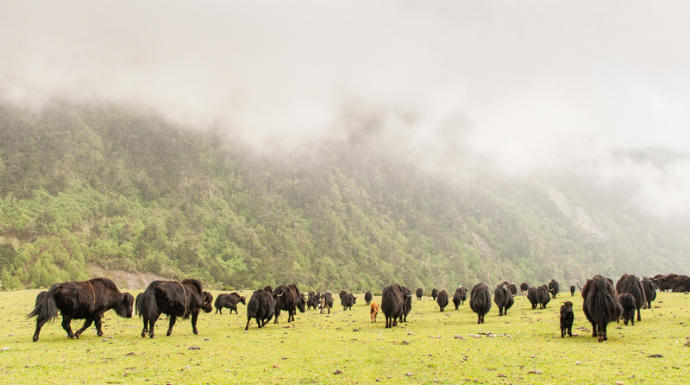
The traditional Brokpa way of life, and their close relationship with the yak, hasn’t changed in centuries. Only time will
tell whether the new road, along with the increased number of tourists it is bound to bring, will deliver everything that
these communities hope, or whether their unique identity will also be lost in the race to modernize?





